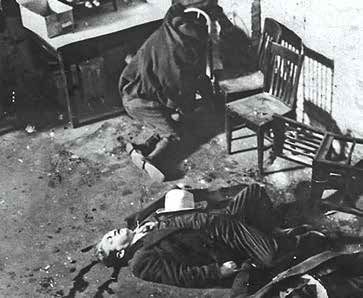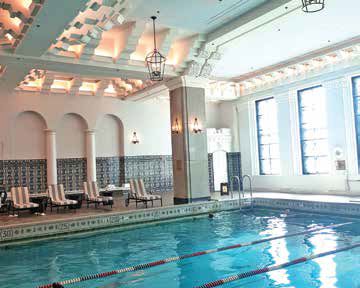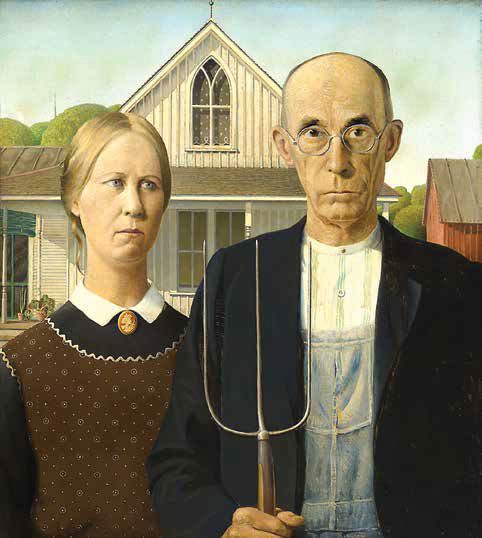Almost one hundred years ago, on July 27th, 1919, a young black man by the name of Eugene Williams decided to go to a racially segregated beach on the shores of Lake Michigan in Chicago. Soon after, a white man threw a rock at him, Eugene fell into the water and drowned. This event triggered huge racial unrest in Chicago that lasted for several days and killed 38 people (25 blacks and 13 whites). It was the most tragic event of the Red Summer of 1919 when more than 150 people died in a series of racial protests across the United States. The heartbreaking photographs of these events, taken by Jun Fujita, the American-Japanese photographer based in Chicago, attracted my attention during the visit to the Chicago History Museum.

Last week, media outlets reported that Chicago got its first ever African-American Mayor, Lori Lightfoot, who also happens to be gay and is a novice at politics. Lightfoot promised to conduct reforms, bring order into the city budget and fight crime. Thanks to her campaign programme, she won almost 50% of votes, ahead of the seasoned politician Toni Preckwinkle, also an African-American woman. At the national level, Obama was the one to break one of the three biggest taboos in US politics by becoming the first ever African-American president. The other two taboos still remain – a female or an LGBT president. The new Chicago mayor broke all three taboos. Two days before St Patrick’s Day, the biggest holiday for the Irish and for us who feel Irish once a year, we landed in Chicago, also known as the Windy City, where, only two months ago, the temperature plummeted to -50°C. On our first night in Chicago, we dined at the Italian restaurant Quartino and noticed that Chicago is much more affordable than New York City, has fewer tourists and more locals in restaurants and streets.
The Saturday before St Patrick’s Day, which is celebrated on March 17th, is the day when the Chicago River is painted green and when a huge parade takes place in honour of the most important Irish saint. While I was having breakfast in the hotel, I noticed that almost all the guests were wearing something green. Afterwards, everybody headed towards the Chicago River which the Plumbers Trade Union has been paining green since 1962. A secret recipe which Chicago’s plumbers use to turn the water into a fluorescent green liquid resembling nuclear waste is an organic compound that is completely safe for the environment. Thousands of people, who were squeezing around the river bank in the morning, are heading towards the Columbus Drive at noon which is the location of the parade that features dozens of music and dance groups, church choirs, orchestras and sponsors.
Other immigrant communities in Chicago also have their own celebrations but St. Patrick’s Day is the most popular event that attracts thousands of tourists from the United States and around the world. That’s the day when we all feel Irish a little bit. As we leave the parade, we pass by a group of religious fanatics, who are a staple in every American city, carrying banners with a caption “Jesus died for our sins!”
The giant sculpture in the Millennial Park, which the Chicagoans affectionately call “The Cloud Gate” or “Chicago’s Bean”, was put there in 2006 and is probably the most photographed landmark in the city. It was made by an Indian-born British artist, Anish Kapoor who won at an international competition. Kapoor was inspired by the shape and appearance of liquid mercury when making this 100-ton-steel sculpture. “The Cloud Gate” appeared in many films, series and music clips but Kapoor filed a lawsuit only in one instance. In 2017, the National Rifle Association (NRA), which promotes the use of weapons and is fiercely against gun control, made a video clip that featured the sculpture. Kapoor immediately sued NRA, demanding from them to delete the sculpture from their clip. He eventually won and NRA had to cut out the scene depicting the Cloud Gate from their video.
The beautiful Samuel Nickerson House, located on the corner of Erie Street and Wabash Avenue, was built in 1873, two years after a huge fire that devoured almost the entire downtown in only two days. Today, this is where the Richard H. Driehaus Museum is which exhibits furniture collections and other items from the so-called Gilded Age. The term itself was first used in 1873 in Mark Twain’s eponymous satirical novel and is referred today as a period of a great industrial progress in the US which lasted from the end of the civil war in 1865 to the onset of the World War I. The era was called “gilded” not “golden”, because during that time, many families became very rich (the Vanderbilts, the Rockefellers, the Fricks, the Carnegies, the Guggenheims, the Morgans, etc.), while the working class was getting increasingly poorer. The big dining room in the house features an installation that depicts the changes in the perception in societal roles during the Gilded Era – for the first time ever, African- Americans have their place at the table and the woman’s role is also changed.


As I am walking towards the Lincoln Park, I think of the 1871 fire (which was apparently caused by a cow that pushed over a lantern) and how Chicago was rebuilt after it. This reminds me of Thessaloniki which was also severely destroyed in the fire in 1917. I’m passing by the Water Tower, which survived the fire because it is made from stone and head down to the Michigan Avenue where I pass by the Fourth Presbyterian Church. A poster saying “Free concerts Friday nights” leads me into the chapel behind the church. There, the all-female trio is performing the well-known opera arias and pop songs. The concert is a gift to the family of the late Pamela McGann, who attended this church and was “a great fan of music”. So Protestant and so American!
Branko Palikuća, born in Užice, moved to Chicago in 1988. Today, he owns several restaurants in the city and knows the scene all too well. We are having dinner with Branko and his friends at his restaurant – Topaz Café. Our company includes Igor Miklja who is making a travelogue about the Serbian athletes that have achieved great success in the US. Branko tells us how wealthy Jews from Chicago, who are his best customers, are moving to Florida in great numbers. My colleague Antonije Kovačević has been living in Chicago for a year and just like many of our people, he works several jobs – he manages performances of musicians from the Balkans, works with trucks, and creates websites for people from ex-Yugoslavia who now live in Chicago and surrounding areas. He tells me that other immigrant communities like the Poles, Iraqis or Italians are much more connected and more helpful to newcomers than the Serbs. While drinking beer at a Mexican restaurant, Antonije says that “Mexicans keep the system going”. “They do all the hard, physical work – cook, clean, build. They are diligent and willing to work for little money”, Antonije says and adds that the worst social stratum is the so-called “white trash”, the marginalized whites who believe that it is sufficient for them just to be white in order to be “better” than “the coloureds” or “the immigrants”. The “white trash” is lazy, entitled and unreliable, Antonije adds.
Nobody knows how many people from Serbia live in Chicago, but the estimates put that number at several hundred thousand, which makes them one of the largest immigrant communities in the US. The first Serbian immigrants came to this city, which is known for its thick-crusted pizza, Chicago Bulls and Al Capone, in the late 19th century. A second huge tide of Serbs came to Chicago immediately after the Second World War, and they were mostly Chetniks and anti-communists. Do you remember the lyrics of one of Baja Mali Knindža’s songs – “When I was little, I received gifts from Chicago from you know who”? Mihajlo Pupin also lived in Chicago. There is a Serbian consulate here too, Serbian restaurants and the Church of St. Simeon Mirotočivi.
Apart from Serbs, Chicago is also populated by Croats, Bosniaks and other ex-Yugoslav nations, but in smaller numbers. A Croat and a Yugoslav left his legacy in the shape of two Chicago landmarks here – they are the two sculptures of Native Americans (“The Spearman” and “The Bowman”) that Ivan Meštrović made in Zagreb in 1928 and later shipped to Chicago. The sculptures of the perfectly chiselled horses with Native American warriors sitting on them are missing a spear, and a bow and arrow. Funnily enough, “The Spearman” doesn’t have a spear and “The Bowman” doesn’t have a bow and arrow, as it is up to the spectator to use their imagination and picture them in their minds.
The Art Deco era in Chicago was known for the fronts of the famous skyscrapers. The InterContinetal Hotel on Michigan Avenue has one of the most elegant building fronts featuring Egyptian motifs, which were very popular during Art Deco due to the great archaeological discoveries in Egypt at that time. The 12th floor has a swimming pool in which Johnny Weissmuller and Esther Williams once swam. When the temperature does not drop to -50°C and when the wind is relatively bearable, Chicago is an ideal city for walkers. There is the Navy Pier with a big Ferris wheel and the Chinese Quarter while the entrance to the city zoo in Lincoln Park is free. New York City has the Metropolitan Institute and Chicago has The Art Institute of Chicago which showcases thousands of priceless art exhibits from all over the world – from Chagall’s stained glass, Van Gogh’s “Bedroom in Arles” and Matisse’s “Bathers by a river” to the probably most recognized American painting, Grant Wood’s “American Gothic”. The figures on the painting were modelled after Wood’s sister Nan Wood Graham and their dentist Dr Byron McKeeby, posing as a farmer and his unmarried daughter.

This year marks another important jubilee, a centenary of Prohibition, i.e. the ban on production and serving of alcohol in the US which came into force following the adoption of the 18th amendment to the US Constitution in 1919. Prohibition was abolished in 1933. During those 14 years, Chicago’s music and club scene flourished, as did the gangster groups that went against each other to the point of annihilation. The aforementioned Jun Fujita took his famous photograph “Saint Valentine Day’s Massacre” after the 1929 Valentine’s Day murder of seven members and associates of Chicago’s North Side Gang. One hundred years after the racially motivated unrest in Chicago, the city is now led by a woman, an African-American and a member of the LGBT population. It remains to be seen whether she will be able to put an end to crime and corruption in the city. In regard to the latter one, she could maybe consult Rod Blagojevich, a man of Serbian origin and the former governor of Illinois who was convicted of corruption in 2011. Blagojevich is currently serving his 14-year-sentence in the Chicago Federal Prison.
By ROBERT ČOBAN